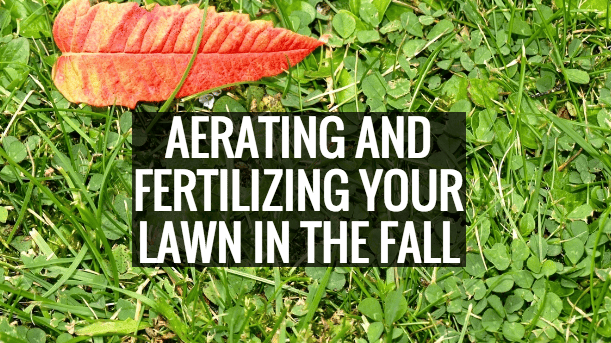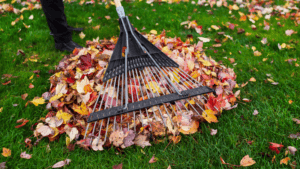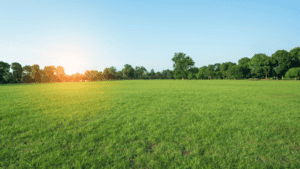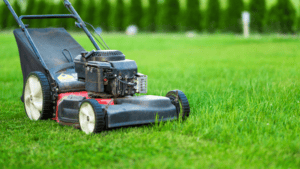The air is getting cooler and days are getting shorter. Ahh, fall has finally arrived. Time to pack away the lawn equipment and let nature take its course with your lawn, right? Wrong. There is still work to be done to ensure that your lawn is green and lush come the spring.
After spending the summer out on the lawn doing yard work or playing kickball with the kids, your lawn is ready for a breather and a spa treatment… or better known as aerating and fertilizing. The fall is truly the perfect time to aerate and fertilize your lawn because enough time will be given to your lawn to heal and begin to work against weeds that pop up in the spring.
Here are our tips to aerating and fertilizing your lawn in the fall to ensure a beautiful lawn in the spring and throughout the summer:
AERATE
Aeration in the fall is important to do to help your lawn avoid compaction, which can hinder grass growth. In addition to allowing your lawn enough time to heal, aerating your lawn in the fall will make certain that you can avoid kicking up weeds and encouraging them to spread.
The process of aerating involves using a piece of equipment that will perforate the soil with small holes. These small holes will allow air, nutrients, and water to sink deeply into the grasses root system. This then helps the roots to grow deeply, giving you a more established lawn.
Aeration tips:
- It’s easiest to aerate a wet lawn. So time it up to get done after it rains or simply water the lawn beforehand.
- Only aerate the areas in your lawn that are compacted. This is usually high traffic areas that get a lot of action throughout the summer.
- For heavily compacted areas, make multiple passes with the machine to really loosen the area.
- Use your mower to break up the soil plugs after they have dried (which usually takes a day or two).
FERTILIZING
After you’ve given your lawn a breather, it’s important to add some nutrients back. This can be achieved by either applying a compost to the lawn or fertilizing.
When choosing a fertilizer, steer clear of fast releasing fertilizers and aim to get a fertilizer high in potassium. Potassium is the nutrient that aids in encouraging strong root systems and prepares grasses to be hardy throughout the winter.
Honestly, if you’re going to fertilize only once in the year, we strongly recommend doing it in the fall. By taking this step now, in the fall, you are safeguarding your lawn against weeds in the spring and helping to strengthen your grasses root system.



